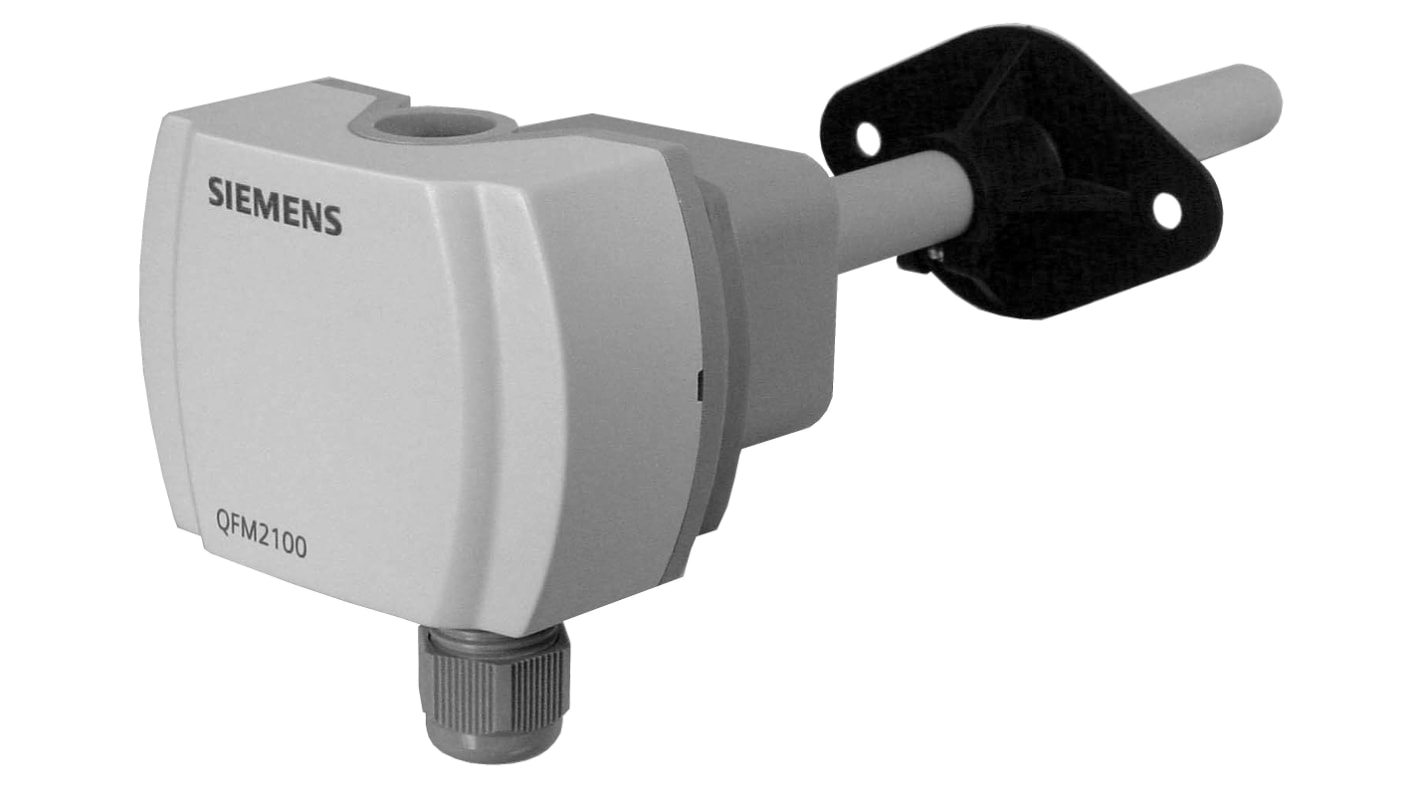Siemens QPM2100 Air Quality Sensor for CO2
- RS Stock No.:
- 287-8746
- Mfr. Part No.:
- QPM2100 / BPZ:QPM2100
- Brand:
- Siemens

Subtotal (1 unit)*
£654.52
(exc. VAT)
£785.42
(inc. VAT)
FREE delivery for orders over £50.00
Temporarily out of stock
- Shipping from 22 December 2025
Need more? Click ‘Check delivery dates’ to find extra stock and lead times.
Units | Per unit |
|---|---|
| 1 + | £654.52 |
*price indicative
- RS Stock No.:
- 287-8746
- Mfr. Part No.:
- QPM2100 / BPZ:QPM2100
- Brand:
- Siemens
Specifications
Technical Reference
Legislation and Compliance
Product Details
Find similar products by selecting one or more attributes.
Select all | Attribute | Value |
|---|---|---|
| Brand | Siemens | |
| Equipment Type | Air Quality & Temperature Sensor | |
| Measurement Parameters | CO2 | |
| Model Number p | QPM2100 | |
| Select all | ||
|---|---|---|
Brand Siemens | ||
Equipment Type Air Quality & Temperature Sensor | ||
Measurement Parameters CO2 | ||
Model Number p QPM2100 | ||
RoHS Status: Not Applicable
- COO (Country of Origin):
- CN
Siemens Air Quality Sensor, 2000PPM Minimum Carbon Dioxide Level • QPM2100, • QPM2100
This air quality sensor is designed for precise indoor air quality monitoring, specialising in carbon dioxide measurement. Made by Siemens, this equipment operates efficiently in air ducts of ventilation systems. The device ensures accurate readings with a measuring This sensor operates between -5°C and +45°C, making it suitable for various indoor environments and well-equipped for temperature and humidity monitoring.
Features & Benefits
• Maintenance-free CO2 sensing element using non-dispersive infrared measurement
• No recalibrations required, ensuring long-term reliability
• Outputs available: DC 0 to 10V, 0 to 5V or 4 to 20mA for flexible integration
• Protects against temperature and humidity with high accuracy
• Quick response time enables effective ventilation management
• Compact design with IP54 rating for versatile installation
• No recalibrations required, ensuring long-term reliability
• Outputs available: DC 0 to 10V, 0 to 5V or 4 to 20mA for flexible integration
• Protects against temperature and humidity with high accuracy
• Quick response time enables effective ventilation management
• Compact design with IP54 rating for versatile installation
Applications
• Ideal for use in party rooms, lounges, and conference spaces
• Monitors air quality in areas with changing occupancy levels
• Effective for energy-efficient ventilation in restaurants and canteens
• Utilised in shopping centres and exhibition halls for optimal comfort
• Supports building automation when used with control systems
• Monitors air quality in areas with changing occupancy levels
• Effective for energy-efficient ventilation in restaurants and canteens
• Utilised in shopping centres and exhibition halls for optimal comfort
• Supports building automation when used with control systems
How does this sensor manage varying occupancy levels effectively?
It uses real-time data on CO2 concentrations to adjust ventilation rates, thereby optimising air quality dynamically based on the number of occupants. This enhances comfort and reduces energy consumption.
What types of output signals does it provide for building automation integration?
The sensor offers adjustable output signals including DC 0–10V, DC 0–5V, and 4–20mA. This versatility allows seamless integration with various building management systems.
What are the implications of using the sensor outside its specified temperature range?
Operating outside the specified limits of -5°C to +45°C may lead to inaccurate readings and potential damage to the device, as it is not designed for harsh environmental conditions.
How is maintenance handled for long-term use?
The sensor is designed to be maintenance-free, eliminating the need for recalibrations, ensuring consistent performance across its service life of up to eight years.
Related links
- Siemens QPA2000 Air Quality Sensor for CO2
- Siemens QPA2002 Air Quality Sensor for CO2, VOC
- Siemens S55720-S453 Air Quality Sensor for CO2, +50°C Max
- Siemens QPA2060 Air Quality Sensor for CO2 +50°C Max
- Siemens S55720-S454 Air Quality Sensor for CO2 +50°C Max
- Siemens QPA2062 Air Quality Sensor for CO2 Temperature 100%RH Max
- Siemens QPA2062D Air Quality Sensor for CO2 Temperature 100%RH Max
- E+E Elektronik EE820-HV2A6E9 CO2 Sensor for CO2, +60°C Max
